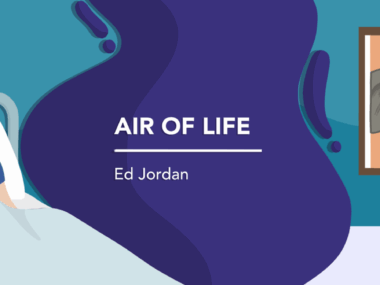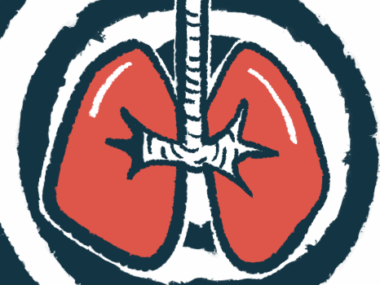‘It’s Not Over Yet’: What It Means to Be Chronically Ill
Written by |

In the sequel of the Harry Potter spoof musical “A Very Potter Musical,” which is appropriately titled “A Very Potter Sequel,” we follow characters we’ve come to know and love as they go back in time. I was always attracted to the opening number, “It’s Not Over Yet,” because my battle with a chronic disease never ends. It’s a series.
The beginning of my story
Life with a chronic condition can be burdensome, especially because we never get a break. My disease doesn’t go on a two-week vacation. Instead, it gets worse.
I was in the hospital a lot as a child, which meant I was frequently absent from school. Back-to-back tuneups, requiring two-week stays in the hospital to receive antibiotics, meant I would receive hundreds of get-well cards from my classmates. For most, it wasn’t the first time they had wished me well.
Some insisted I would defeat my “sistic fibromyalga,” which is pretty good for a second grader. Others took the opportunity to give me advice:
“My mom said if you wear socks to bed, you’ll stop getting sick.”
“More milk!”
“Miss G. said you’re getting lots of sleep. That’s so nice! I wish I could sleep all day.”
They didn’t understand what “chronic” meant, and I didn’t address the miscommunication. I didn’t want to draw attention to my disease because that’s not how I wanted to be remembered. Plus, I thought it was rude to critique any kind of affection. The result was that the suggestions and the misunderstandings grew out of control.
After each hospital stay, my return to school was celebrated less than the previous one, with fewer balloons and get-well cards. Once I reached middle school, my classmates grew bored of my triumphant returns. I never volunteered to educate the public about cystic fibrosis (CF), explain how many medications were coursing through my body, or highlight how gruesome each hospital stay was. My hospitalizations were ignored or chalked up to mono.
The sequel
By eighth grade, most people didn’t even know I had cystic fibrosis. Once again, I had neglected to educate my friends about my disease and how much worse it had gotten. Most of all, I denied them the thing they needed to hear the most: an engaging sequel to my elementary school hospitalizations, which might have been titled as follows:
“Nicole Sigur and the Colonized Pseudomonas”
“Nicole Sigur Coughs Blood in the Bathroom During a Dance Show”
“Nicole Sigur Teaches Herself Calculus in the ICU”
“Nicole Sigur and the Stenotrophomonas Maltophilia”
By the time I graduated high school and made my way through my freshman year of college, the sequel became more of a series, as if a new action movie director had taken over the project and titled it:
“Nicole Sigur and the Mycobacterium Abscessus”
Unfortunately, over time, my belief in secrecy remained the same. I was lucky enough to work at the Princeton Theological Seminary before going on long-term disability leave. Staff members there were extremely accommodating. But even then, I was six months into my job before I felt comfortable disclosing my chronic illness to my boss, and I only spilled the beans because I was admitted to the hospital.
The trilogy
It wasn’t until my bilateral lung transplant on June 14, 2019 that I felt inclined to publicize my story. There was so much to tell at that point that it had to be broken down into several trilogies:
“Nicole Sigur and the Beaker of Blood on Her Desk”
“Nicole Sigur and Her Complete Resistance to Antibiotics”
“Nicole Sigur and Her New Best Friends: O2D2 and Wheelchair”
“Nicole Sigur Might Have to Cancel Her Wedding”
“Nicole Sigur Wins a $10,000 Grant to Produce Her Original Musical, ‘Fall Risk'”
To this day, I look back and wonder if transparency would have helped or hurt my situation. Would my Facebook friends have blocked me if I posted a selfie after every emergency room visit? Would they have followed my story over time? Would they have shown me more or less support during my transplant if I’d been transparent?
While the characters in “A Very Potter Sequel” were able to go back in time, I cannot. If I could, I would educate my friends and family about my chronic illness.
My advice to others in a similar situation would be to start with the basics. Cystic fibrosis is a chronic disease. Chronic illness is generally defined as a condition that lasts more than a year and requires continuous medical intervention. CF patients are born with the disease and will require intervention until a cure is found.
I’ve learned the importance of communicating the meaning of “chronic,” and how much transparency affects storytelling. It’s equally important for chronically ill people to not feel like they must limit their transparency. Storytelling is the most important part of advocacy, so I’ll share whenever I can.
I wonder what will happen during my quadrilogy.
Come back every Thursday to read more of my story.
***
Note: Cystic Fibrosis News Today is strictly a news and information website about the disease. It does not provide medical advice, diagnosis, or treatment. This content is not intended to be a substitute for professional medical advice, diagnosis, or treatment. Always seek the advice of your physician or other qualified health provider with any questions you may have regarding a medical condition. Never disregard professional medical advice or delay in seeking it because of something you have read on this website. The opinions expressed in this column are not those of Cystic Fibrosis News Today, or its parent company, Bionews, and are intended to spark discussion about issues pertaining to cystic fibrosis.








Leave a comment
Fill in the required fields to post. Your email address will not be published.